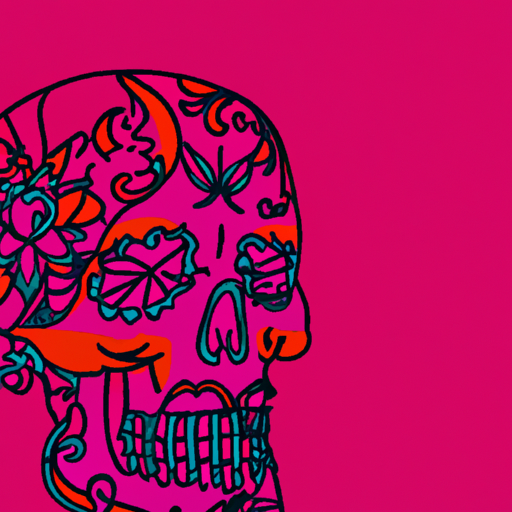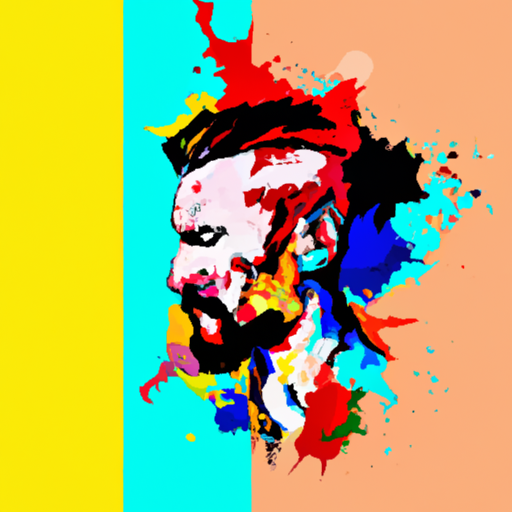
-
Table of Contents
Tattoo Art and Illustration: A Creative Fusion

Tattoos have been a form of self-expression for centuries, with roots dating back to ancient civilizations. Over time, tattoo art has evolved from simple symbols and designs to intricate and detailed illustrations. Today, tattoo artists are pushing the boundaries of creativity by merging the worlds of art and illustration. This fusion has resulted in stunning and unique tattoo designs that captivate the imagination. In this article, we will explore the fascinating world of tattoo art and illustration, examining its history, techniques, and the impact it has on the art world.
The Evolution of Tattoo Art
Tattooing has a rich history that spans across cultures and continents. From the ancient Egyptians to the Polynesians, tattoos have served various purposes, including religious, cultural, and social significance. In the past, tattoos were often simple and symbolic, representing tribal affiliations or personal beliefs.
However, as tattooing gained popularity in the Western world, the art form began to evolve. Tattoo artists started incorporating more intricate designs and experimenting with different styles. Traditional tattoo art, characterized by bold lines and vibrant colors, became a staple in the industry.
As the demand for tattoos grew, so did the need for innovation. Tattoo artists began to draw inspiration from other art forms, such as painting and illustration, to create more complex and visually stunning designs. This marked the beginning of the fusion between tattoo art and illustration.
The Fusion of Tattoo Art and Illustration
The fusion of tattoo art and illustration has opened up a world of possibilities for both artists and clients. By combining the techniques and aesthetics of illustration with the permanence of tattoos, artists can create truly unique and personalized designs.
One of the key elements of this fusion is the use of storytelling. Illustration has long been used as a medium to tell stories, and tattoo art is no different. Tattoo artists are now incorporating narrative elements into their designs, creating tattoos that are not only visually appealing but also meaningful and thought-provoking.
For example, a tattoo artist may create a design that tells the story of a client’s life journey, using various symbols and imagery to represent different milestones or experiences. This fusion of art and storytelling allows for a deeper connection between the artist, the client, and the tattoo itself.
Techniques and Styles
The fusion of tattoo art and illustration has also led to the development of new techniques and styles. Tattoo artists are now using techniques traditionally associated with illustration, such as shading, cross-hatching, and stippling, to create depth and texture in their designs.
Additionally, artists are experimenting with different styles, blending elements of traditional tattoo art with illustrative techniques. For example, artists may incorporate watercolor-like washes or intricate linework reminiscent of pen and ink illustrations.
One popular style that has emerged from this fusion is neo-traditional tattooing. Neo-traditional tattoos combine the bold lines and vibrant colors of traditional tattoo art with the detailed shading and illustrative elements of illustration. This style allows for more intricate and realistic designs while still maintaining the timeless appeal of traditional tattoos.
The Impact on the Art World
The fusion of tattoo art and illustration has not only transformed the tattoo industry but has also had a significant impact on the art world as a whole. Tattoo artists are now being recognized as legitimate artists, with their work being exhibited in galleries and museums around the world.
This recognition has led to a greater appreciation for the artistry and skill involved in tattooing. Tattoo artists are no longer seen as mere technicians but as true artists who can create stunning and meaningful works of art on a living canvas.
Furthermore, the fusion of tattoo art and illustration has inspired other artists to explore new mediums and techniques. Illustrators, painters, and graphic designers are now incorporating tattoo-inspired elements into their work, blurring the lines between different art forms.
Case Studies: Tattoo Artists Pushing the Boundaries
Several tattoo artists have gained recognition for their innovative and boundary-pushing work in the field of tattoo art and illustration. Let’s take a look at a few notable examples:
1. Dr. Woo
Dr. Woo is a Los Angeles-based tattoo artist known for his intricate and detailed designs. He often incorporates illustrative elements into his work, creating tattoos that resemble pen and ink drawings. His unique style has earned him a dedicated following and collaborations with major fashion brands.
2. Sasha Unisex
Sasha Unisex, a Russian tattoo artist, is known for her vibrant and abstract designs. She combines watercolor-like washes with bold linework to create tattoos that resemble paintings. Her work has gained international recognition and has been featured in numerous publications.
3. Guy Le Tatooer
Guy Le Tatooer, a French tattoo artist, is known for his fusion of traditional tattoo art with Japanese ukiyo-e woodblock prints. His designs often feature intricate linework and vibrant colors, creating a unique blend of Eastern and Western aesthetics.
Conclusion
The fusion of tattoo art and illustration has revolutionized the tattoo industry and the art world as a whole. By combining storytelling, techniques, and styles from both art forms, tattoo artists are creating stunning and meaningful designs that push the boundaries of creativity.
This fusion has also led to a greater appreciation for tattoo art as a legitimate form of artistic expression. Tattoo artists are now recognized as true artists, with their work being exhibited alongside other traditional art forms.
As the fusion of tattoo art and illustration continues to evolve, we can expect to see even more innovative and boundary-pushing designs. The possibilities are endless, and the future of tattoo art and illustration is undoubtedly exciting.
